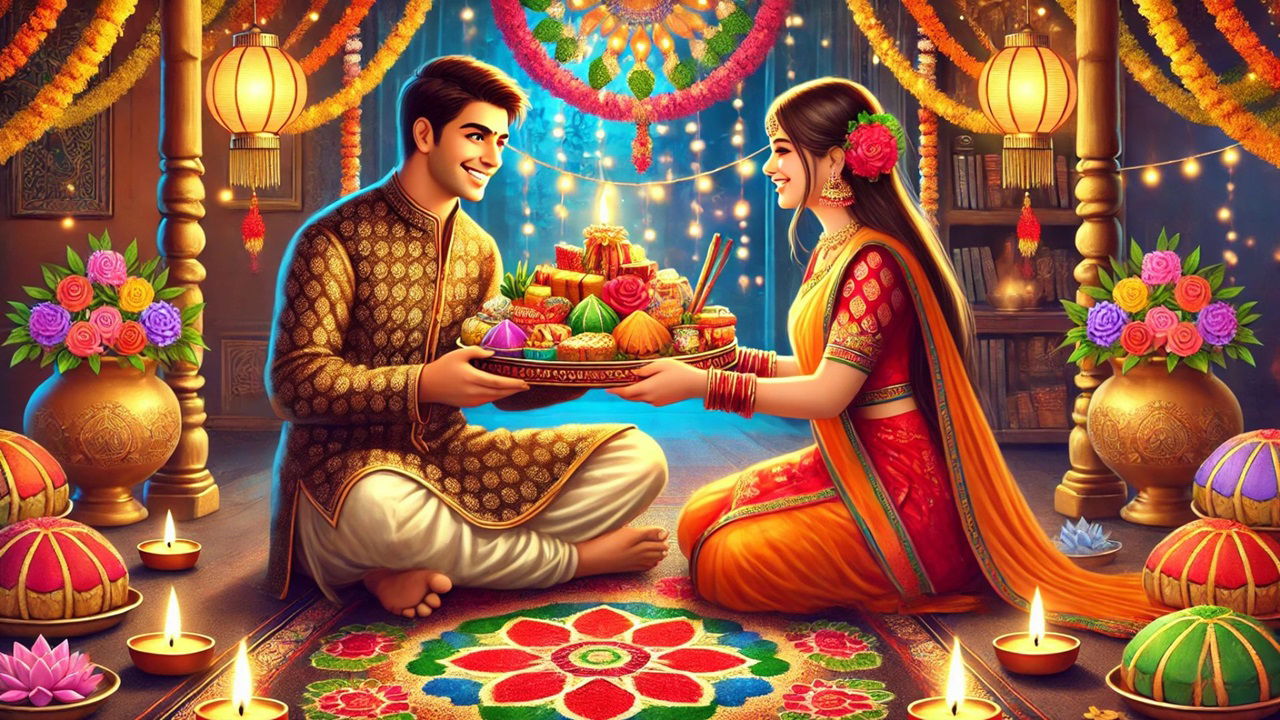
This year, there is some confusion about when to celebrate Bhai Dooj, November 2 or November 3. Bhai Dooj, a significant Hindu festival with special importance in Sanatan Dharma, symbolizes the love between brothers and sisters and will be celebrated on November 3, 2024. Also known as Yama Dwitiya, this day falls on the second day of the Shukla Paksha in the Kartik month, according to the Hindu lunar calendar. Bhai Dooj closely follows the festival of Diwali, marking the conclusion of the festive season. Here’s everything you need to know about Bhai Dooj 2024, Date, timing, its significance, worship rituals, and customs to observe for a harmonious celebration.
When is Bhai Dooj 2024: November 2 or 3?
This year, the Bhai Dooj tithi (date) begins at 8:21 PM on November 2 and concludes at 10:05 AM on November 3. Since traditional rituals are best performed during daylight hours, the festival will be observed on November 3. The auspicious time for sisters to apply the ceremonial tilak on their brothers’ foreheads is from 1:10 PM to 3:22 PM. This two-hour period is the ideal time to seek blessings for happiness and longevity.
Significance of Bhai Dooj
Bhai Dooj celebrates the deep bond of love and trust between brothers and sisters. The festival’s origin traces back to ancient Hindu legends. One popular tale is of Lord Yama, the god of death, who visited his sister Yamuna on this day. Yamuna welcomed him with great warmth and performed aarti, praying for his well-being. Moved by her devotion, Yama declared that every brother who receives a tilak from his sister on this day will be blessed with prosperity and protection. Hence, Bhai Dooj is also called Yama Dwitiya in some regions, highlighting its association with Lord Yama.
How to Celebrate Bhai Dooj
The rituals of Bhai Dooj are simple yet heartfelt, focusing on blessings, prayers, and exchanging gifts. Here’s a step-by-step guide to observing Bhai Dooj:
-
Sisters prepare a small plate or puja thali with rice, vermilion (kumkum), a diya (earthen lamp), sweets, and fruits. The diya symbolizes light and prosperity.
-
Sisters apply tilak on their brothers’ foreheads, traditionally a red mark that signifies a wish for their brothers’ protection. Alongside the tilak, rice grains are placed, symbolizing peace and positivity.
-
Sisters perform an aarti for their brothers, praying for their well-being, happiness, and success in life. During this moment, sisters also offer sweets to their brothers as a mark of love.
-
After the rituals, brothers often present gifts to their sisters, reciprocating their love and wishes. It is a beautiful exchange that strengthens the bond between siblings.
Important Dos and Don’ts for Bhai Dooj
Bhai Dooj rituals are meaningful, and a few guidelines are recommended to ensure the festival’s sanctity and harmony. Here are some do's and don'ts:
Dos
-
Before performing any rituals, make sure the space is clean, as cleanliness is essential for any puja or auspicious occasion.
-
Fresh flowers and incense sticks are ideal to set a positive and sacred ambiance during the rituals.
-
Honor the rituals with respect, and maintain the joyful spirit of Bhai Dooj by focusing on gratitude and family bonding.
Don’ts
-
While the festival can be celebrated throughout the day, it is advisable to perform the tilak ceremony during the auspicious Muhurat from 1:10 PM to 3:22 PM to enhance blessings.
-
Avoid disagreements or arguments on this day to uphold the harmony and warmth that Bhai Dooj embodies.
-
Traditional customs may include certain food restrictions, such as avoiding specific ingredients or foods during the puja.
While Bhai Dooj is widely celebrated across India, different states have their own unique customs. In Maharashtra, for instance, the festival is called Bhau Beej, where sisters offer a special meal to their brothers, while in West Bengal, it’s known as Bhai Phonta. Each tradition, though distinct, carries the same essence of sibling affection and goodwill.
Bhai Dooj is not just a day of rituals; it is a celebration of sibling love, shared memories, and the mutual support that brothers and sisters provide throughout life. It’s a time to cherish this unique bond and to strengthen it with blessings and gratitude.
















